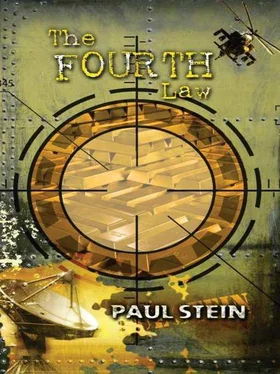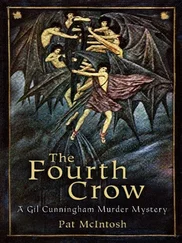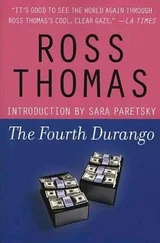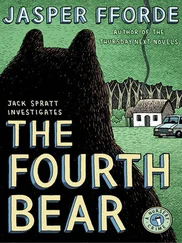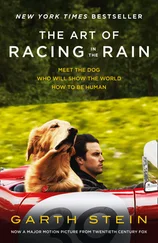Paul Stein - The Fourth Law
Здесь есть возможность читать онлайн «Paul Stein - The Fourth Law» весь текст электронной книги совершенно бесплатно (целиком полную версию без сокращений). В некоторых случаях можно слушать аудио, скачать через торрент в формате fb2 и присутствует краткое содержание. Жанр: Боевая фантастика, на английском языке. Описание произведения, (предисловие) а так же отзывы посетителей доступны на портале библиотеки ЛибКат.
- Название:The Fourth Law
- Автор:
- Жанр:
- Год:неизвестен
- ISBN:нет данных
- Рейтинг книги:3 / 5. Голосов: 1
-
Избранное:Добавить в избранное
- Отзывы:
-
Ваша оценка:
- 60
- 1
- 2
- 3
- 4
- 5
The Fourth Law: краткое содержание, описание и аннотация
Предлагаем к чтению аннотацию, описание, краткое содержание или предисловие (зависит от того, что написал сам автор книги «The Fourth Law»). Если вы не нашли необходимую информацию о книге — напишите в комментариях, мы постараемся отыскать её.
The Fourth Law — читать онлайн бесплатно полную книгу (весь текст) целиком
Ниже представлен текст книги, разбитый по страницам. Система сохранения места последней прочитанной страницы, позволяет с удобством читать онлайн бесплатно книгу «The Fourth Law», без необходимости каждый раз заново искать на чём Вы остановились. Поставьте закладку, и сможете в любой момент перейти на страницу, на которой закончили чтение.
Интервал:
Закладка:
Paul Stein
The Fourth Law
ONE
Palo Alto, California
The moonless, star-swept night was ideal for flying. The pilot glanced at his gauges and could see that the horizon was in perfect alignment with the wings of the twinengine Cherokee. They were approaching the drop-zone in Palo Alto from an easterly heading, a distance of only twenty miles from his hangar in Half Moon Bay. On the left side of the fuselage, the great metropolis surrounding San Francisco Bay shone resplendent with millions of twinkling lights. Travis marveled at the industriousness of generations of Californians that played a role in creating this prosperity. From his vantage point, the city lights appeared like an enormous treasure chest, its burgeoning jewels shimmering in the night.
“Five minutes to the drop-zone,” the pilot said into his mic.
A brief moment followed. Travis Marlon began adjusting the aircraft’s controls so that the engine RPM slowed. He feathered the prop, reducing torque to the engine, the plane stabilizing at a slower speed to give the parachutists a safe departure from the fuselage. He heard two clicks of static in his headphones, indicating the jumpers had received his message, recognizing they were just minutes away from their target.
Travis Marlon loved his job, aware that few were as fortunate as he was to follow a career path that mirrored their passion. Flying in the Bay Area was especially exciting: the Pacific Ocean; Silicon Valley; palm trees and sunshine; central nervous system to the sixth biggest economy in the world; epicenter of biotechnology research on the West Coast. Palo Alto was considered one of the finest places to live in California, even considering the overburden of three million people in the greater San Francisco Bay that called this area home.
But this density of humanity was precisely why Marlon also hated the Bay Area. The freeways were intolerably congested at all times of the day, making air quality an oxymoron rather than a measurement; even the simplest of trips needed careful planning to take advantage of when commute traffic was ebbing. Everything considered, Marlon relished his good fortune, flying high above the chaos that strangled everyday movement below.
The two ninja-looking skydivers in the Cherokee’s fuselage began a final inventory of their equipment in preparation for exiting the aircraft. Both skydivers were completely dressed from head to foot in black Nomex suits. Each wore night-vision goggles, black leather gloves, and storm trooper boots to facilitate their cloak of invisibility. Even their chutes were black-the usually bright metallic carabineers and hardware associated with normal parachute harnesses were top-dressed with black antireflective paint. The two parachutists would be nearly undetectable against the nighttime sky.
“Three minutes,” Marlon said into his radio, and this time he slowed the plane to final approach speed at the predetermined altitude of 5,000 feet. At this height, an observer on the ground would still be able to hear the approaching aircraft, but he had cut the running lights so that anyone looking up from the ground would only see the starry sky. Marlon knew well that cutting the running lights was highly illegal; it would guarantee suspension of his pilot’s license by the FAA were he caught. But this was merely the smallest of infractions that these three were presently undertaking.
The two parachutists completed their safety check and secured the Cherokee’s open door, sitting with their legs dangling outside the fuselage. They removed their headsets and awaited the pilot’s final command before launching into the night sky. Richard Kilmer inspected the lights of the city below, and although he didn’t immediately recognize the Quantum Building, he knew the pilot would get them over the intended target without fail. They had shared scores of military night jumps together and he took great comfort in knowing that Marlon wouldn’t let him down.
At the one-minute mark, Marlon triggered the yellow light indicating that the jumpers were within sixty seconds of the target. Kilmer turned and gave him a thumbs-up. He then looked at the second hand on his illuminated LED dive altimeter to follow the final seconds prior to the jump.
Kilmer clenched his fist and struck it firmly on Dallas Weaver’s thigh. They exchanged a fist pump to confirm they were ready, mindful of the danger of a low-altitude night jump atop an unlit building, but eager to dive from the plane and get on with the job.
“Jumpers away,” Travis whispered to himself, while activating the green light above the back door of the plane. Both parachutists immediately pushed away from the Cherokee, dropping into the sky and letting gravity pull them toward the intended target.
Kilmer was immediately disoriented, as was customary upon exiting the aircraft, especially on a night dive. At first, all he could process was his body flipping end over end, registering brief flashes of light from the city below juxtaposed between fleeting glimpses of a star-strewn black canvas. He instinctively arched into a classic dive posture: chest pushed forward with arms and legs trailing behind. This orientation assured the swift recovery of his bearings, which was essential in a jump from only 5,000 feet. Kilmer would have a mere fifteen seconds of free fall to aim toward the Quantum Building before opening his chute.
Finally gaining his bearings, he looked at the altimeter and positioned his body into a flying wedge to speed himself closer to the target. Each parachutist would need to be nearly perfect to avoid overshooting the building. To do so would put them perilously close to landing on Highway 82. Kilmer had no concern about his partner. He knew Weaver was doing exactly as instructed. They would both safely rendezvous on the Quantum Building at Stanford in the next several minutes. No communication was allowed throughout their jump; more pressing matters demanded their undivided attention.
At 1,000 feet, precisely on schedule, Kilmer pulled the rip cord, releasing the Kevlar straps attached to the parasail chute. His descent decelerated as the black nylon ballooned when his chute caught the air. He spotted the target and tugged on the toggle straps, allowing him to guide his descent in broad, sweeping arcs, closer to the target with each completed circle. Finally, at about twenty-five feet above the surface of the LZ, he pulled down hard on the opposing toggle cords, creating a braking maneuver by the chute. Kilmer dropped silently onto the roof of the Quantum Building, about ten feet from the edge of the nine-story building. Not bad, he thought. His night-vision goggles had given an excellent view of the roof’s limited landing zone. Let’s hope the rest of this job goes as smoothly as the jump.
Kilmer quickly gathered his nylon chute, stuffing the material and cord into his recovery rucksack. Then he looked over his shoulder for Weaver. As expected, he was at the identical point in their neatly choreographed jump. Both men advanced to the south side of the Quantum Building at about the same time.
“That was fun,” Dallas Weaver said eagerly, as he approached Kilmer near the edge on the building. “Did you notice the lights on the sixth floor right above our target?”
“Yeah, I saw ’em,” Kilmer replied tersely, his tone signaling that he wanted no wasted time before penetrating the fifth-floor office. “We’ll give it a bash…no worries now, mate. Git geared up,” he ordered.
The next step in the breach was to rig an anchor point to the top of the building. Weaver wrapped the metal air-conditioner cabinet with a small diameter Kevlar cord, connecting the free ends with a figure-eight knot. Next he gathered up a bight of the rope and tied a jumbo overhand figure-eight. As a last point in the rigging process, Weaver clipped a steel carabineer into the loop created by the knot and attached the two climbing ropes to the anchor.
Читать дальшеИнтервал:
Закладка:
Похожие книги на «The Fourth Law»
Представляем Вашему вниманию похожие книги на «The Fourth Law» списком для выбора. Мы отобрали схожую по названию и смыслу литературу в надежде предоставить читателям больше вариантов отыскать новые, интересные, ещё непрочитанные произведения.
Обсуждение, отзывы о книге «The Fourth Law» и просто собственные мнения читателей. Оставьте ваши комментарии, напишите, что Вы думаете о произведении, его смысле или главных героях. Укажите что конкретно понравилось, а что нет, и почему Вы так считаете.
